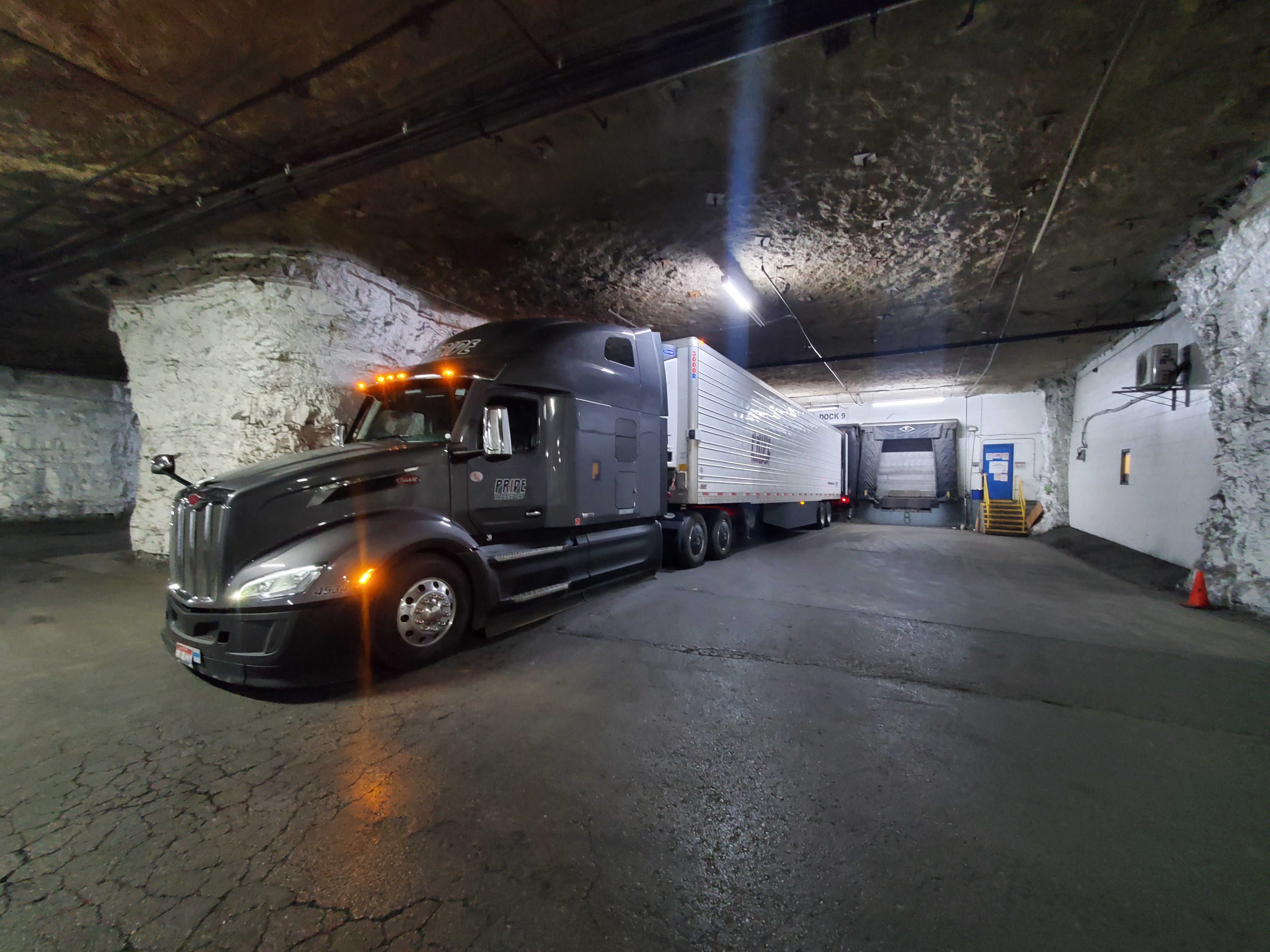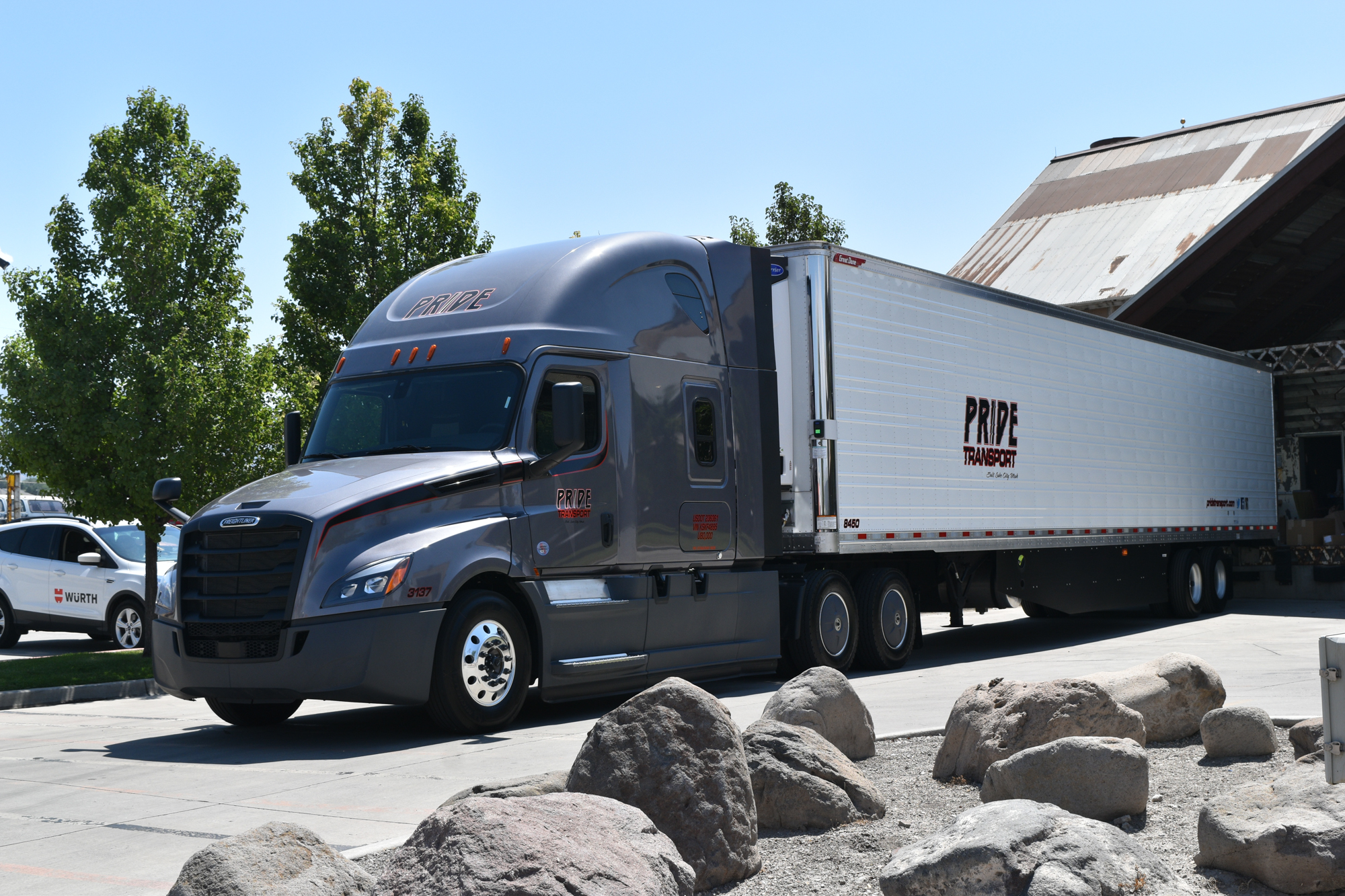by Pride Transport | Sep 05, 2024
Backing techniques are some of the hardest skills to master as a truck driver. Unlike a car, where you’re maneuvering just one piece of equipment, backing a tractor-trailer requires extreme patience, careful movements, and a little bit of physics to successfully back the separate-but-connected truck cab and trailer into a space without incident.
But practice makes (near) perfect, and you can learn to back wherever you need to without incident. We’ll go over the differences between straight line backing, offset backing, and alley docking so you’re prepared for whatever comes your way.
What Is Straight-Line Backing?
Straight-line backing is exactly what it sounds like: you’re moving the truck and trailer backward in a straight line without any significant steering adjustments. Drivers commonly use straight-line backing techniques at truck stops and rest areas, as well as when they’re backing into a straight loading dock.
This technique doesn’t require too many steering adjustments, but that doesn’t mean it’s always easy to execute. Every backing situation is different and should be treated with the same caution and patience you’d use for more complicated maneuvers. Maintaining a safe environment is the most important goal in all driving scenarios, regardless of the level of difficulty.

What Is Offset Backing?
Offset backing requires the driver to back the truck and trailer into a space that is offset from the starting position. Unlike straight-line backing, the offset technique requires making a lateral movement.
Truck drivers may use offset backing if they have to move from one lane to another one next to it in a truck yard. Maneuvering into a loading dock that isn’t directly aligned with the trailer may also require offset backing.
Because angles are involved, offset backing presents more of a challenge than straight-line backing. Drivers have to consider how the trailer moves in relation to the tractor and approach the angles with this difference in mind.
Drivers also need to be careful about oversteering. Adjustments should be small corrections done at a slow, idling speed. Move too quickly or steer too far one way or the other, and you’re creating more problems for yourself.
One tip for avoiding overcorrecting is to start with a wide turn to get the tractor-trailer into the right starting position. Then, use reference points (such as boundary lanes and nearby trailers, if applicable) to help determine where your truck is in relation to the space you’re aiming for.
What Is Alley Docking?
Ask any driver, and they’ll likely say alley docking is the most complex backing technique. Alley docking is backing the truck and trailer at an angle into a narrow space, such as between two obstacles or into a tight loading dock. Alley docking is commonly used in crowded urban areas, so those two obstacles could be two buildings, or a building and another vehicle, for example. Crowded warehouses may also require drivers to use alley docking techniques.
What makes alley docking difficult is the amount of movement drivers must execute in a small space. Correctly performing the technique requires:
Steering precision. Drivers have to make hard turns at specific moments, and turning too soon or too late will make correcting more difficult.
Spatial awareness. Drivers need to know where their truck is in relation to the space they’re aiming for, but also in relation to the structures creating the narrow space.
Ability to assess and adjust for tight angles. Alley docking requires more angular movements than offset backing, so drivers must constantly assess the trailer’s angle toward the space and make minor corrections.
Despite the high skill level, you can master alley docking. Proper training is essential in helping you learn how to set up correctly. For example, alley docking at a 45-degree angle requires a different starting position than alley docking at a 90-degree angle. Practice as often as you can in a controlled environment so you can test out different starting positions and note the amount of space you need in front of the cab and beside the trailer in order to maneuver correctly.
Tips for Every Backing Scenario
Backing techniques vary, but the following tips can be used in any backing situation.
Slow down and take your time
Slow is the name of the game when backing a tractor-trailer. You might feel the need to rush if the location is crowded or busy, but remain calm and steer as slowly as necessary to make precise adjustments. An idling speed is fine — in fact, it’s encouraged!
Help yourself move more efficiently by using all of the truck’s mirrors for guidance. This helps you make adjustments and hopefully keeps you from having to correct mistakes made in a rush.
Get out and look
Every situation is different, so there might be times when you need to get out of the truck mid-maneuver and assess your surroundings. In most alley docking scenarios, drivers need to exit the cab at least once (though it’s usually twice) to check all the way around the truck for any obstructions, foot traffic, or damage to the surrounding area, such as a dent on a truck in the next space. You don’t want to begin backing into a space only to discover too late that something’s not right.
Make some noise
You’ve checked for unobstructed paths, but don’t expect that every other driver is doing the same. Use your flashers and horn when you get back in the truck and are about to begin moving. While this step is especially important in a crowded, busy area, it’s good practice to do this every time so you’re always in the habit of putting safety first.
Although truck drivers spend a majority of their career driving forward, expertly executing backing techniques is a critical skill for professional drivers. Mastering alley docking and straight-line or offset backing improves your ability to safely operate your truck and reduce the risk of accidents. Since a truck driver’s livelihood depends on a strong driving record, it’s imperative to learn every backing technique so you’re prepared for almost anything.
Drive With Pride
At Pride Transport, we offer driver training to new and seasoned CDL holders to ensure our truck drivers are the safest team on the road. Our trainers are committed to instilling the importance of safe driving and equipping drivers with the skills they need to maintain roadway safety. Check out our driver jobs today to find the right position for you!
